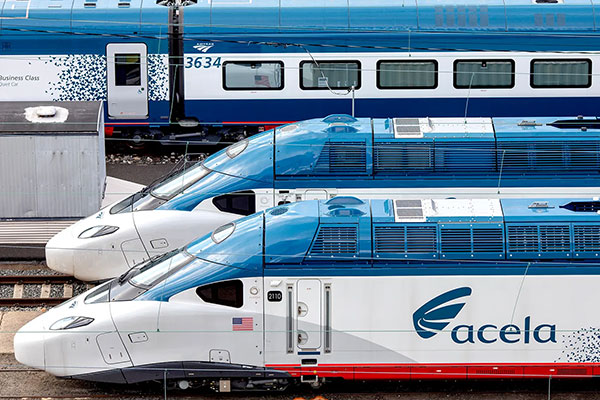Shifting to High-Speed Rail in the US for a Decarbonized Future

CSSH/CEE Associate Professor Serena Alexander explains the necessary efforts and investments in rail infrastructure to introduce eco-friendly high-speed rail in the U.S.
This article originally appeared on Northeastern Global News. It was published by Tanner Stening. Main photo: AP Photo/David Boe
Why the US doesn’t yet have ‘high-speed’ rail — and why that could soon change
Projects that would bring “high-speed” trains to connect metropolitan areas across the country are starting to break ground, and Amtrak is beginning to test faster trains in the Northeast.
The Biden administration also recently announced a $6 billion investment to deliver “world-class high-speed rail,” and to “launch new passenger rail corridors across the country.” These developments have many asking: Are we witnessing the arrival of high-speed rail, heralding a long-awaited shift away from vehicle emissions toward eco-friendly mass transit?
Serena Alexander, associate professor with a joint appointment in the schools of Civil and Environmental Engineering and Public Policy and Urban Affairs, says bullet trains are certainly feasible in the U.S., but would require significant investment, planning and restructuring of the existing system to make it possible.

Serena Alexander, associate professor with a joint appointment in the schools of Civil and Environmental Engineering and Public Policy and Urban Affairs. Photo by Matthew Modoono/Northeastern University
In short, the effort calls for nothing short of a complete transformation of U.S. infrastructure — a multi-trillion dollar package that would entail a significant reshaping of legislative priorities.
Alexander, who worked for the U.S. Department of Transportation’s Climate Change Center and served as a visiting scholar with the Office of the Under Secretary, has spent her career researching efforts to decarbonize transportation. The question motivating her: How can we build a more sustainable, resilient and equitable transportation system?
Could high-speed rail help bridge the gap between the emissions-heavy present, and a more resilient, electrified future? Alexander shared some thoughts with Northeastern Global News.
Read full story at Northeastern Global News